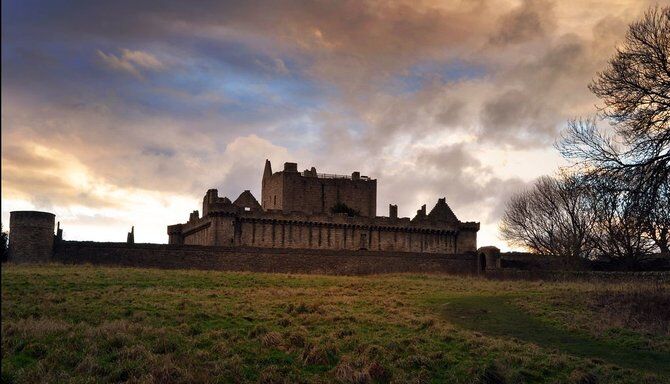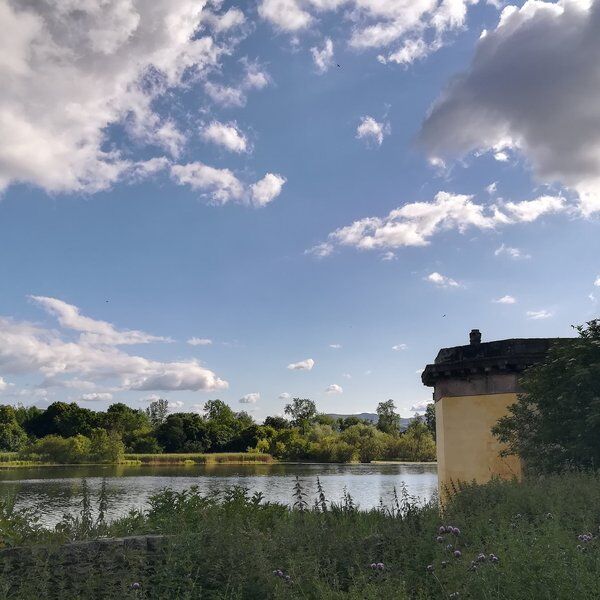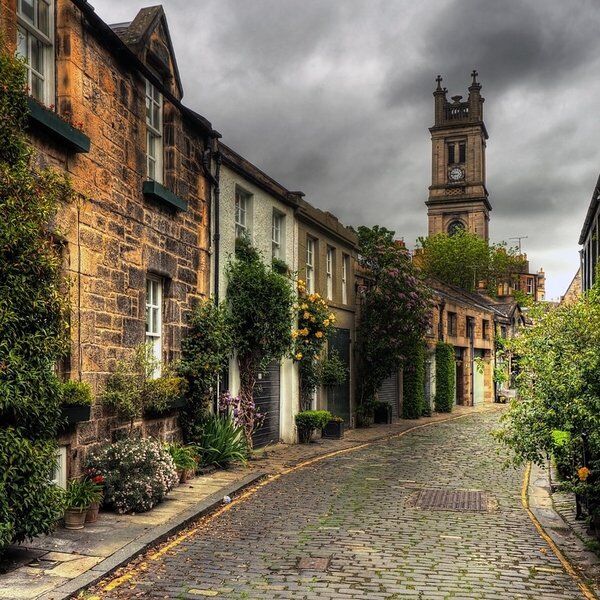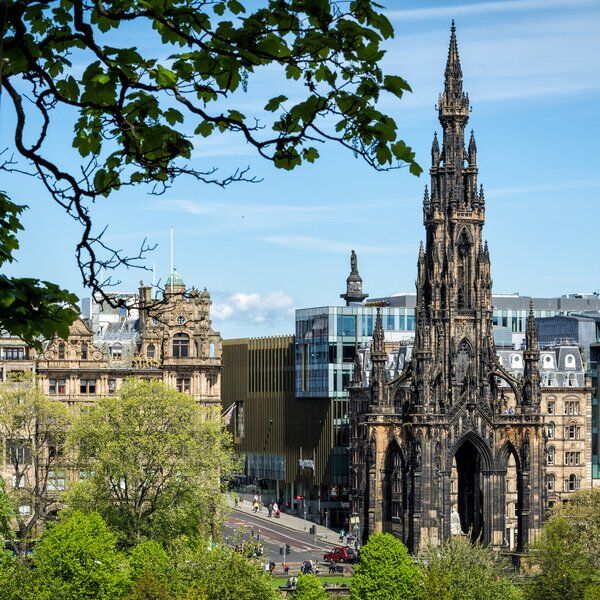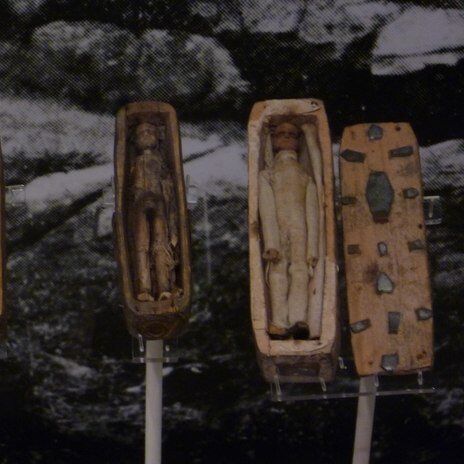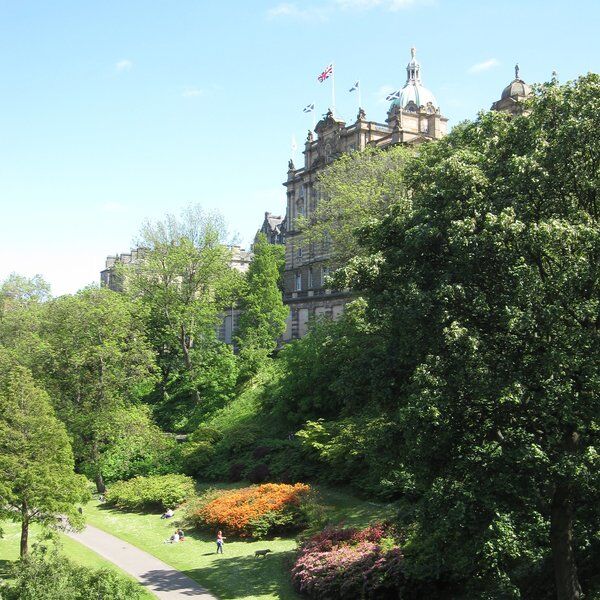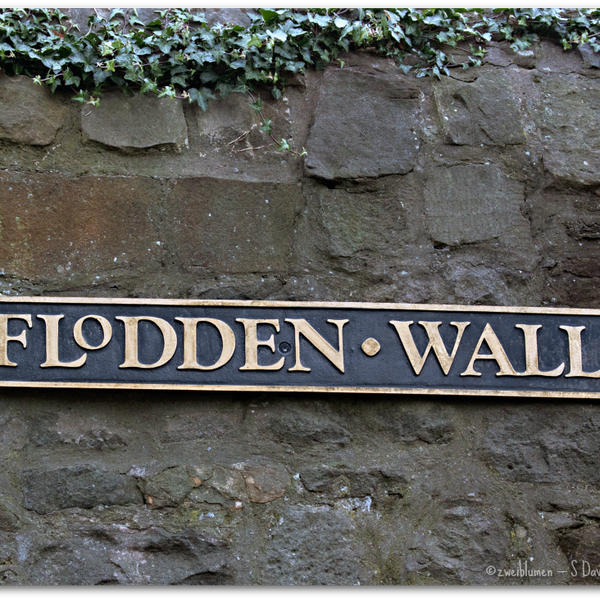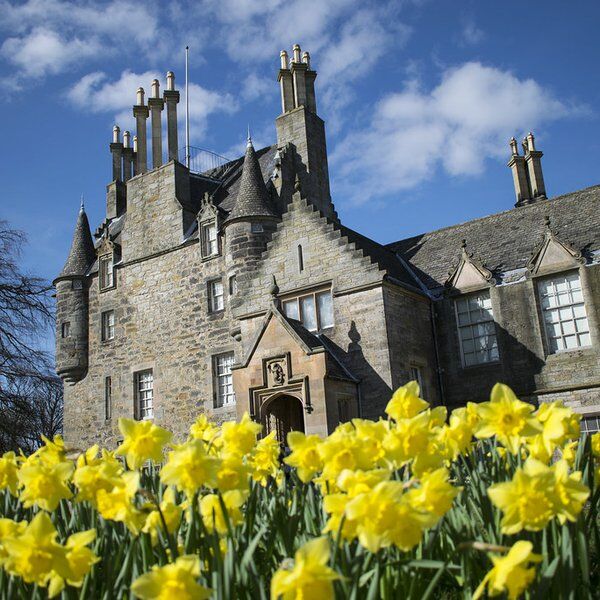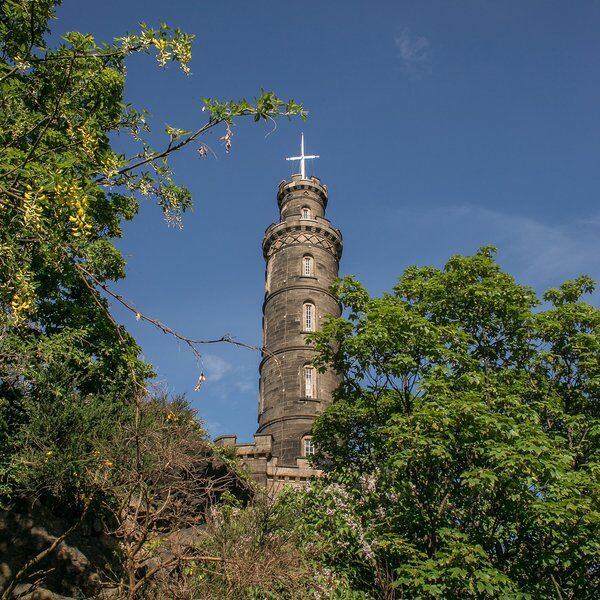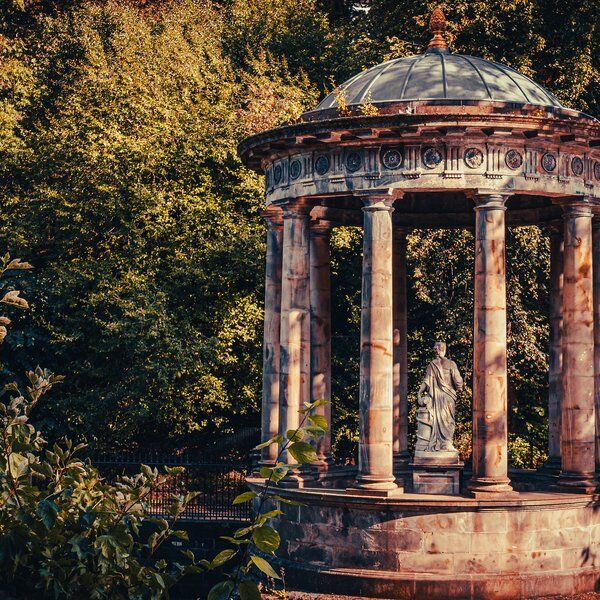Discover Craigmillar Castle in Edinburgh
Ask someone to name a castle in Edinburgh and you can bet your last shortbread they’ll shout “Edinburgh Castle!” before you’ve even finished the question. But what if we told you there’s another one? A castle so rich in history, drama, and secret plots, it gives its more famous cousin a serious run for its money. Say hello to Craigmillar Castle—Edinburgh’s "other" castle, and quite possibly its best-kept secret.
Just three miles southeast of the Royal Mile, nestled on a gentle hill in the shadow of Arthur’s Seat, sits this sprawling mediaeval marvel. Once the proud seat of the powerful Preston family, Craigmillar Castle is now a beautifully atmospheric ruin—less polished than Edinburgh Castle perhaps, but far more mysterious (and with a lot fewer tourists, too).
This isn't just a pile of old stones either. Craigmillar is one of the best-preserved medieval castles in Scotland, a feat made even more impressive considering it’s been standing in some form since the late 14th century. It’s got all the trimmings you’d expect from a real-life fortress: soaring tower houses, murder holes, secret staircases, and enough winding corridors to play hide and seek for hours—believe us, we’ve tried.
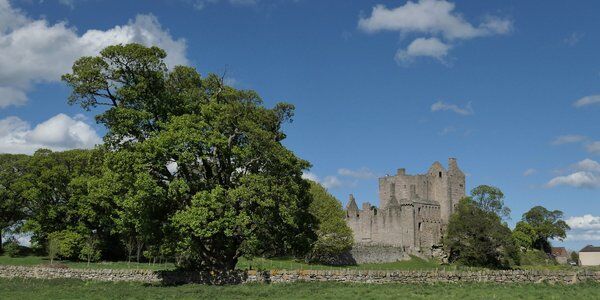
Craigmillar Castle’s Mediaeval Origins
Let’s rewind to the 12th century, when the lands of Craigmillar were chilling in the safe hands of Dunfermline Abbey, thanks to a generous grant from King David I. But then, in 1342 the land began its journey into the hands of the powerful Preston family, after King David II decided they’d be good stewards.
The final jigsaw piece of land clicked into place in 1374, gifted by Robert II to Sir Simon de Preston. With that, the Prestons officially owned the whole estate—and they had big plans.
By the early 1400s, the very first bricks of Craigmillar’s mighty tower house were being laid, most likely by either Simon Preston himself or his grandson Sir George. And this wasn’t just any old house—it was a trendsetter!
Among the earliest examples of a proper Scottish tower house, this chunky structure stood an impressive 17 metres tall, with walls thick enough to shrug off most mediaeval tantrums (nearly 3 metres thick, to be exact). Inside was a labyrinth of cosy rooms, including a great hall that was perfect for banquets and dances.
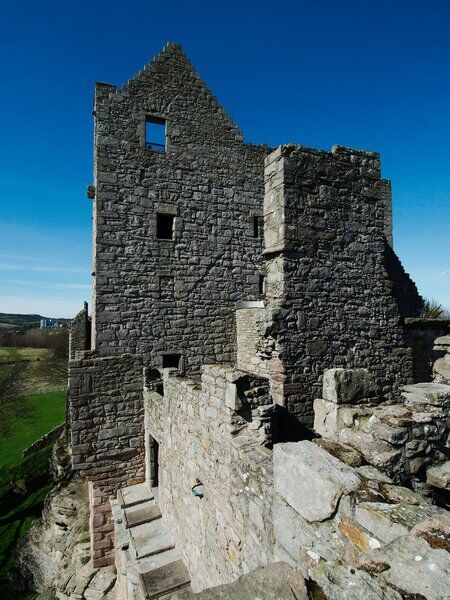
The Arm of a Saint, Fortifications, and a Royal Prison
As the 1400s rolled in, Sir William Preston—well-travelled thanks to a jaunt through France—decided it was time for a courtyard wall, complete with gun holes shaped like upside-down keyholes (very on-trend at the time). He even returned from his travels with a rather holy souvenir: the arm of Saint Giles, which he gifted to St Giles’ Cathedral in Edinburgh.
Around this time, the Prestons also added a private chapel within the castle grounds, ensuring they could say their prayers without leaving their fortress walls.
But even high walls couldn’t keep out trouble. In 1479, the castle briefly doubled as a royal prison when John Stewart, the Earl of Mar (and brother to King James III), was locked up here under accusations of witchcraft.
Spoiler alert: Stewart didn’t make it out alive, and his death raised more than a few royal eyebrows.
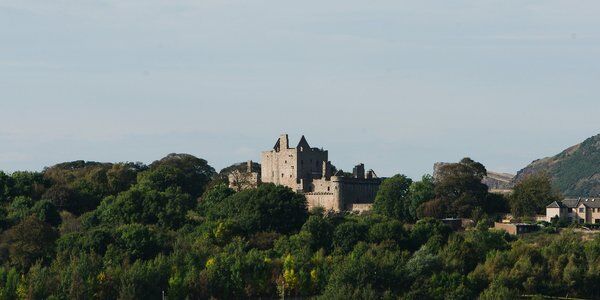
Royal Visits and Fiery Attacks: The 1500s
By 1511, Craigmillar was officially upgraded to barony status—castle glow-up complete. Just a few years later in 1517, while Edinburgh was dodging an outbreak of plague, the infant King James V was whisked away to Craigmillar for some rural R&R. His French guardian made sure the place was secure by ordering new locks and even a stable for the royal mule.
In 1544, the good vibes were rudely interrupted when the English army, led by the Earl of Hertford, stormed through as part of the "Rough Wooing"—a rather aggressive matchmaking attempt between young Mary, Queen of Scots, and Edward, Prince of Wales.
The castle was set ablaze, but don’t worry, it didn’t stay down for long. The ever-loyal Sir Simon Preston had the place patched up in no time, including giving the courtyard buildings a bit of a domestic makeover.
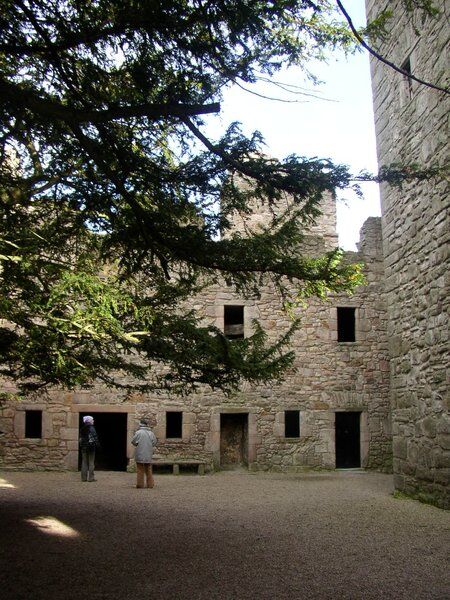
Mary Queen of Scots and the Craigmillar Castle
Speaking of Mary, she stayed at Craigmillar not once, but twice! The first visit, in 1563, was all diplomacy and meetings—she even had a chat with the English ambassador, Thomas Randolph. But it’s the second stay, from November to December 1566, that really shook things up.
Recovering from a difficult childbirth and stuck in a bit of a royal rut, Mary sought some peace and quiet in the castle’s east range. But behind those thick stone walls, her noblemen were scheming. They proposed getting rid of her unpopular husband, Lord Darnley—either by divorce or by... darker means. The infamous “Craigmillar Bond” was the result, a chilling pact to bump him off.
Though Mary reportedly wasn’t directly involved (and may not have known the full extent of the plot), Darnley was murdered a few months later in February 1567.
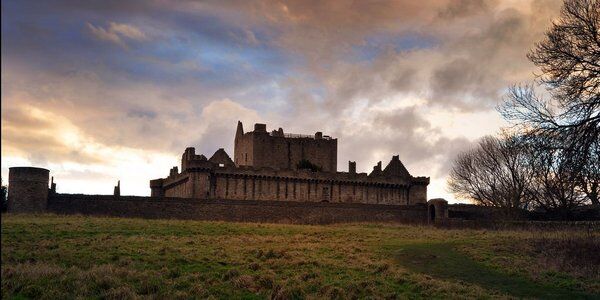
Civil War, Explosions, and Witchcraft
Craigmillar wasn’t done with drama just yet. In 1571, during the Marian Civil War, a barrel of gunpowder went off in the castle grounds, killing a captain and two soldiers fighting for Mary’s cause. The following year, the Regent Mar set up camp at Craigmillar while laying siege to Edinburgh Castle. Clearly, Craigmillar was the place to be if you were in the thick of Scotland’s 16th-century political chaos.
Later, in 1589, King James VI (the future James I of England) popped by to visit Sir David Preston while impatiently waiting for news of his bride, Anne of Denmark. Ever the romantic, James got tired of waiting and decided to sail off to Norway himself to fetch her.
But Craigmillar’s reputation for weird goings-on wasn’t over. In 1591, a woman named Agnes Sampson was accused of using witchcraft at the castle—allegedly placing a charmed wax figure in a dovecote to help a friend. Even into the 1600s, the castle’s association with witch trials continued, with a local commissioner linked to several hearings.
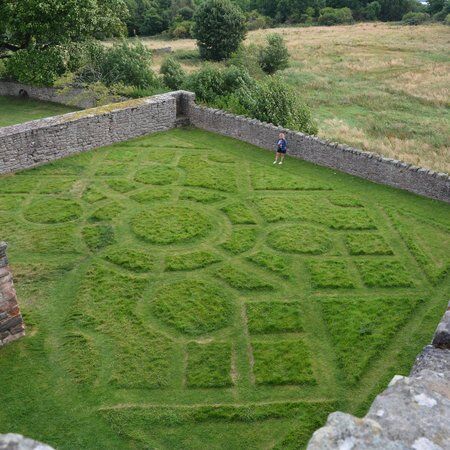
Enter the Gilmours: But Not For Long
In 1660, the Prestons sold up, and the Gilmour family became the new lords of the manor. Sir John Gilmour was a bigwig Royalist and got a nice reward after Charles II was restored to the throne—namely, the prestigious role of Lord President of the Court of Session.
He set about modernising the west range of the castle to make it a bit more homely for his family. But the Gilmours didn’t stick around for long. By the early 1700s, they had packed up and moved into the much comfier Inch House nearby.
Still, legend has it that two of the laird’s daughters remained in the castle even after the rest of the family left, giving the place a slightly eerie, fairy-tale vibe. By 1775, Craigmillar was in romantic ruins—perfect for painters, poets, and daydreaming visitors.
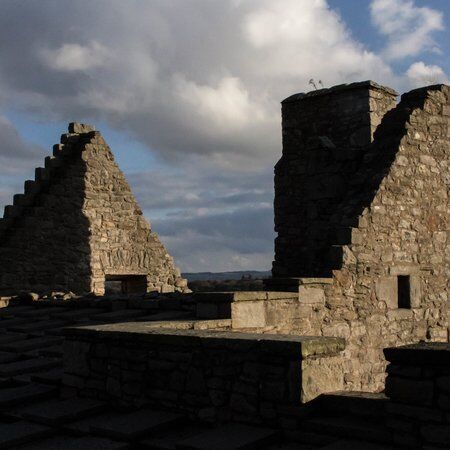
From Crumbling Relic to Protected Treasure
Craigmillar Castle was a bit of a tourist darling in the 18th and 19th centuries, appearing in sketches, poems, and even as a candidate for royal renovation (a plan to kit it out for Queen Victoria fell through). The Queen did eventually visit in 1886, and restoration efforts kicked off under the ownership of Walter James Little Gilmour.
Finally, in 1946, Craigmillar Castle entered the care of the state. Today, it's lovingly looked after by Historic Environment Scotland, with its dramatic ruins and castle grounds protected as both a Scheduled Ancient Monument and a listed historic garden.
Psssst! In more recent times, Craigmillar Castle appeared in the TV series Outlander when it portrayed Ardsmuir Prison in S3E3.
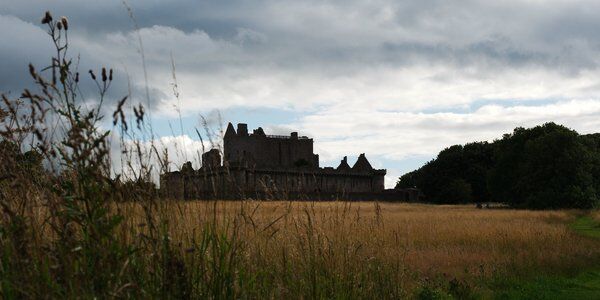
The Characteristics of Craigmillar Castle
Craigmillar Castle is an exceptional example of a mediaeval Scottish stronghold, layered with centuries of architectural additions.
The Tower House
At the heart of Craigmillar Castle stands the original L-plan tower house, built in the 14th century atop a rocky outcrop. This four-storey structure, later surrounded by curtain walls, measures about 15.8 by 11.6 metres, with a projecting jamb of 8.5 by 3.5 metres. Its thick walls and vaulted ceilings reflect both defensive and residential functions.
Accessed originally via a wooden bridge, the sealed entrance still bears the Preston family arms. The second floor features a grand hall with a carved fireplace (c.1500) and a kitchen, later converted into a bedroom. Above is the lord’s private chamber, with the stair continuing to a vaulted room and roof parapet.
A sixth-storey room was later added to the jamb, and timber balconies once offered scenic views of the gardens and Lothian countryside.
The Inner Courtyard and Curtain Wall
Surrounding the tower house is a robust 15th-century curtain wall, forming a courtyard roughly 10 metres across. This defensive structure, up to 1.8 metres thick and 40 by 27 metres externally, features round towers at each corner. The southeast tower includes a postern gate, while the main arched gate on the north wall is decorated with both the Preston family arms and the royal arms of Scotland.
Keyhole-shaped gun holes—more symbolic than practical—dot the towers, and machicolations along the battlements allowed defenders to drop projectiles on attackers. Inside the wall, remnants of window openings hint at former ranges of buildings along the southern side. Though there’s no well, a stone trough through the wall brought water into the castle.
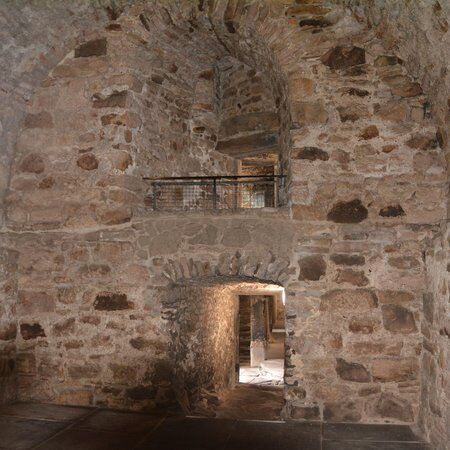
The East Range
The east range, reconstructed in the 16th century, stretches along the southeast and eastern sides of the inner courtyard and is connected to the tower house by a broad spiral stair. The southeast section includes two chambers above, and cellars below once served as a bakehouse and possible prison.
The east side features vaulted kitchens accessed by a stair from the courtyard, adorned above by another depiction of the Preston arms—this time supported by monkeys. Underneath are more vaulted storage spaces and a blocked-up postern gate. On the upper level, a long gallery once extended along the second floor, though today only its lower walls remain.
The West Range
Rebuilt in the 1660s by the Gilmour family, the west range provided modern accommodations for Sir John Gilmour, Lord President of the Court of Session. Slates for the roof were transported from Stobo, and the interiors were impressively finished. The ground floor featured a large drawing or dining room with broad windows, a carved stone fireplace, plaster ceilings, and decorative finishes.
To the north was a kitchen; to the south, a chamber above a wine cellar. The upper floor held four bedrooms. A new stairway connected this range to the tower house. The main entrance to the west range was framed by a classical pediment, with a 20th-century plaque above displaying the Gilmour family arms. Today, the west range is roofless, with its internal floors and windows largely gone.
The Outer Court and Gardens
Beyond the inner curtain wall lies a larger, less fortified outer wall from the early to mid-16th century, enclosing a spacious outer court. A round tower in the northeast corner includes both gun holes and an upper-floor doocot (pigeon house).
A family chapel, dedicated to St Thomas Becket around 1520, now serves as a Gilmour burial aisle. Gardens once flourished in the east and west courtyard sections. The west garden was overlooked by the large windows of the west range. A barn in the northwest was repurposed as a Presbyterian church in 1687 for the village of Liberton.
To the south, informal gardens and orchards extended into an enclosure marked by the remains of 16th-century viewing towers. The standout feature here is the fish pond, shaped like the letter 'P' for Preston—a rare and archaeologically significant design in Scotland. In the 1820s, picturesque landscaping plans were drawn to connect Inch House with the castle grounds, incorporating the legendary “Queen Mary’s Tree,” a sycamore said to have been planted by Mary, Queen of Scots herself.
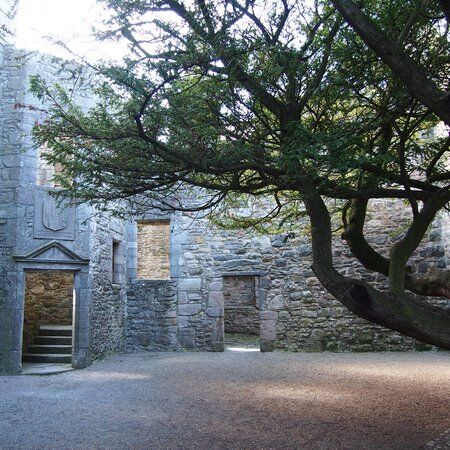
Things to Do at Craigmillar Castle
So, what’s there to do at Craigmillar Castle besides marvel at the stonework and pretend you’re a 15th-century noble?
1. Climb One of Scotland’s Oldest Tower Houses
The main tower is a climb worth every step. Once you’ve scaled the spiral stairs, you’ll be rewarded with breathtaking views of Holyrood Park, Arthur’s Seat, and Edinburgh Castle in the distance.
2. Explore the Castle’s Many Nooks and Crannies
Craigmillar is full of hidey-holes, secret staircases, and peculiar passageways that feel straight out of a fantasy novel. It’s a haven for curious minds—perfect for kids, photographers, or adults who refuse to grow up.
3. Find the Famous Fishpond
Out in the grounds, keep your eyes peeled for the interestingly-shaped pond. Shaped like a big ol’ “P” for “Preston,” it’s one of the rarest examples of an ornamental garden feature from the medieval period.
4. Snap Some Epic Shots
Bring your camera or phone because this place is prime photography territory. From crumbling towers to wild gardens and sweeping Edinburgh views, your photo album (or Instagram grid) will thank you.
5. Take on the Family Treasure Hunt
Download the official Craigmillar fact-finding quiz. It’s ideal for families (or competitive adults), and it adds a playful twist to your historical exploration.
6. Catch a Local Event
Depending on when you visit, the castle often plays host to live reenactments, costumed characters, or medieval-themed fun. Definitely check the events calendar before you go—you might end up in the middle of a sword fight or siege (the fake kind, don’t worry).
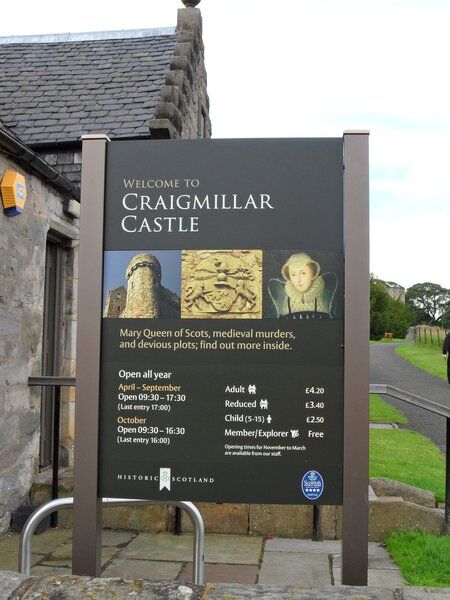
Visiting Craigmillar Castle
Planning your visit? Here’s the lowdown on everything you need to know before you go:
How to Get There
Craigmillar Castle is just three miles southeast of Edinburgh’s city centre, tucked away near Peffermill Road and Old Dalkeith Road. Parking is pretty limited, so public transport is the way to go. Several buses will get you within a 10-minute walk, and you can hop on from Edinburgh Waverley Station if you’re coming in by train.
Or, if you’re feeling adventurous (and want to earn that scone at the café later), it’s about an hour’s walk from the centre of town.
Opening Hours & Tickets
You can explore Craigmillar Castle year-round, though parts of the site might be off-limits during conservation work. Best bet? Book online in advance to guarantee entry and save a few quid.
- Adult (16–64 yrs): £7.50 (Online) | £8.50 (On the Day)
- Concession (65+ or unemployed): £6.00 (Online) | £6.80 (On the Day)
- Child (7–15 yrs): £4.50 (Online) | £5.00 (On the Day)
- Family (1 adult + 2 kids): £15.00 (Online) | £16.50 (On the Day)
Check Historic Environment Scotland’s website for current opening times, accessibility info, and any event listings before you make the trip.
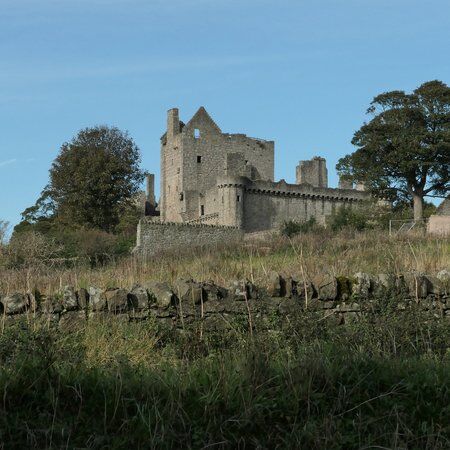
Explore Beyond Craigmillar Castle with CityDays
Once you’ve climbed the towers, solved the quiz, and scoped out the fishpond, don’t hang up your adventurer’s hat just yet—there’s more exploring to be done! CityDays offers thrilling scavenger hunts and treasure trails throughout Edinburgh (and cities all over the world!).
Solve riddles, uncover history, and race the clock—no dusty guidebooks required. From the shadows of the Old Town to the myths and legends that rattle around New Town, you’ll uncover the city’s secrets one clue at a time.
Perfect for:
- Team-building events
- Birthday parties
- Couple adventures
- Family days out
- Anyone who thinks “normal sightseeing” is a bit, well… normal
Ready to go beyond Craigmillar Castle? Join us for a CityDays adventure, and let the games begin!
